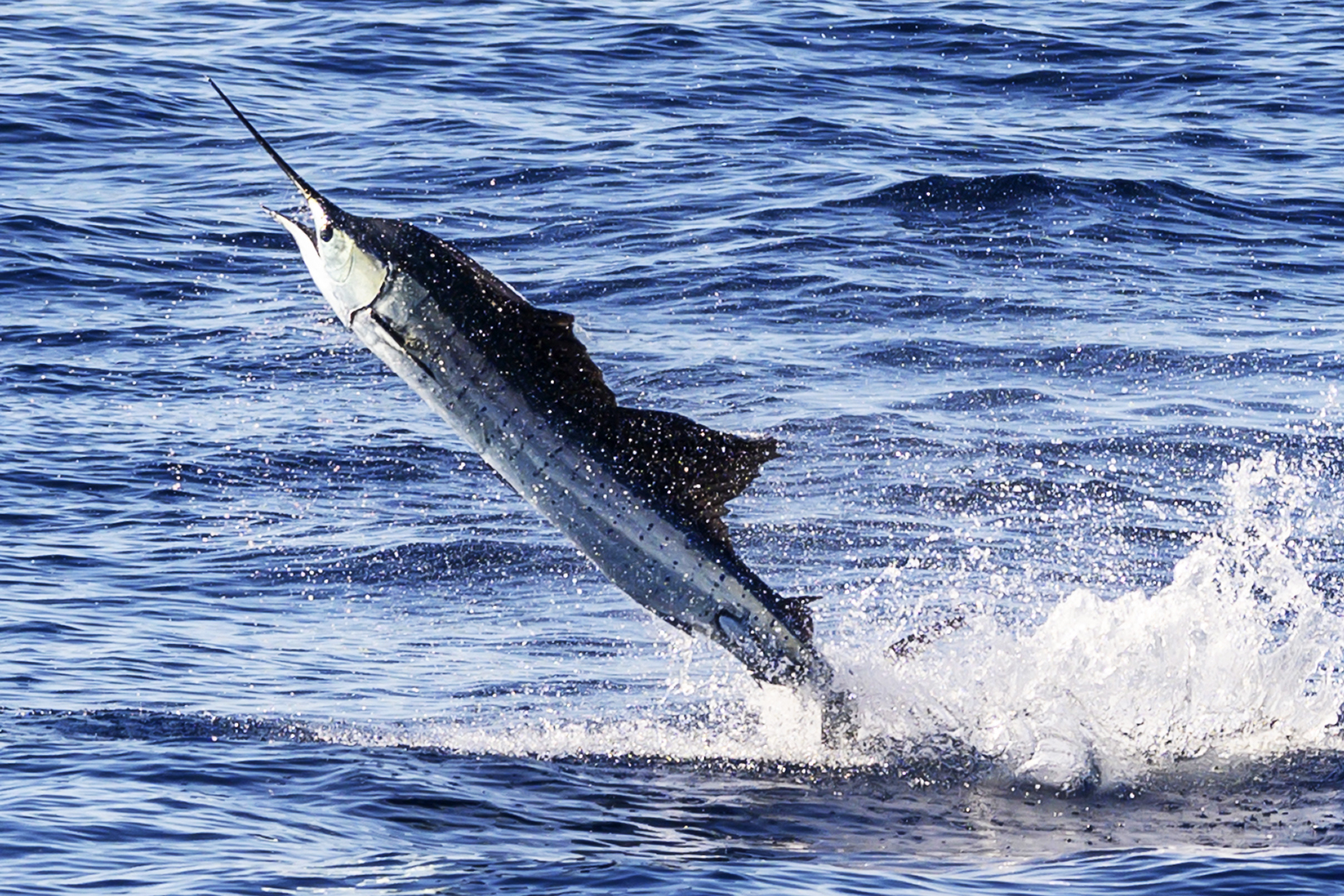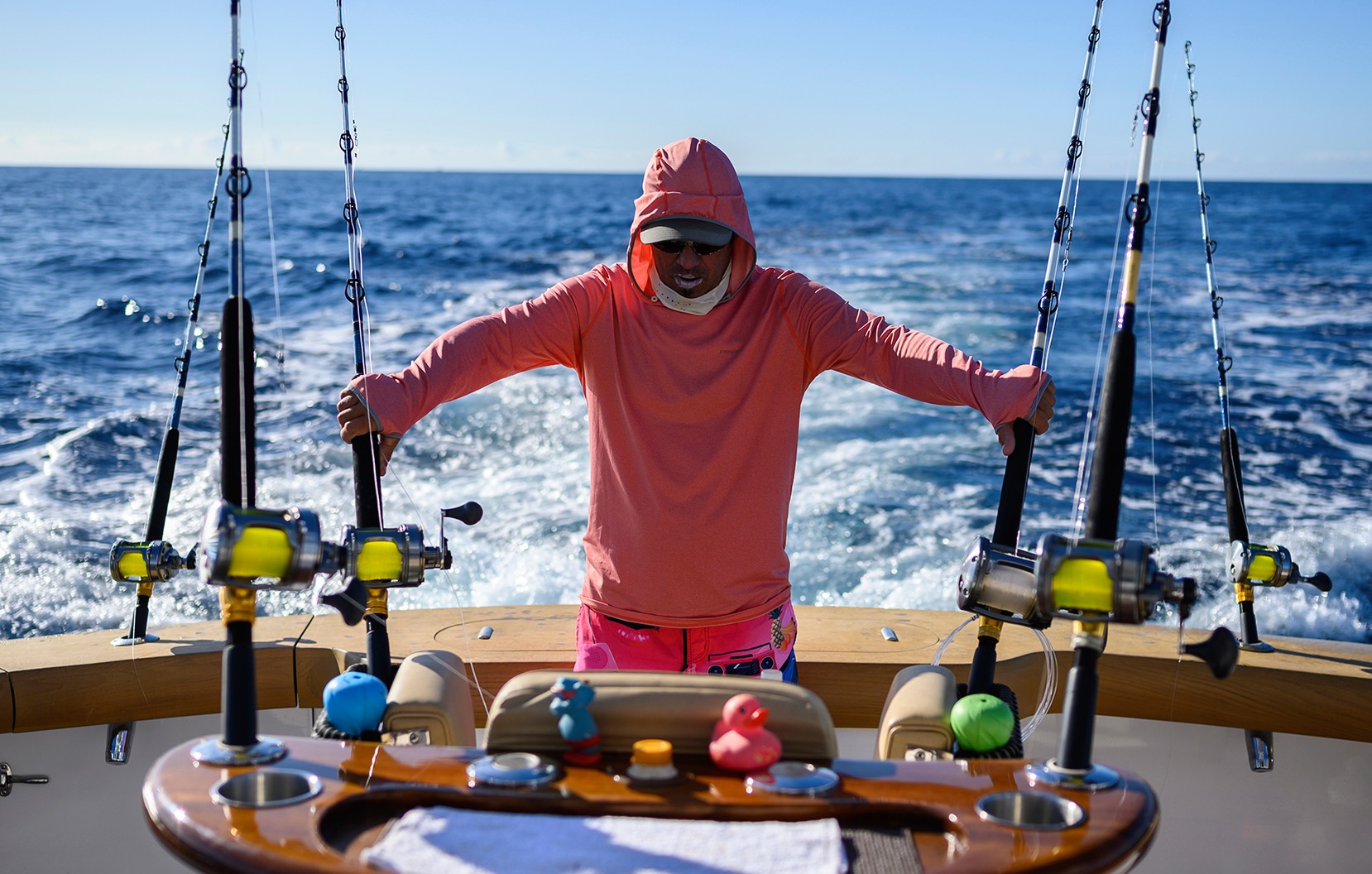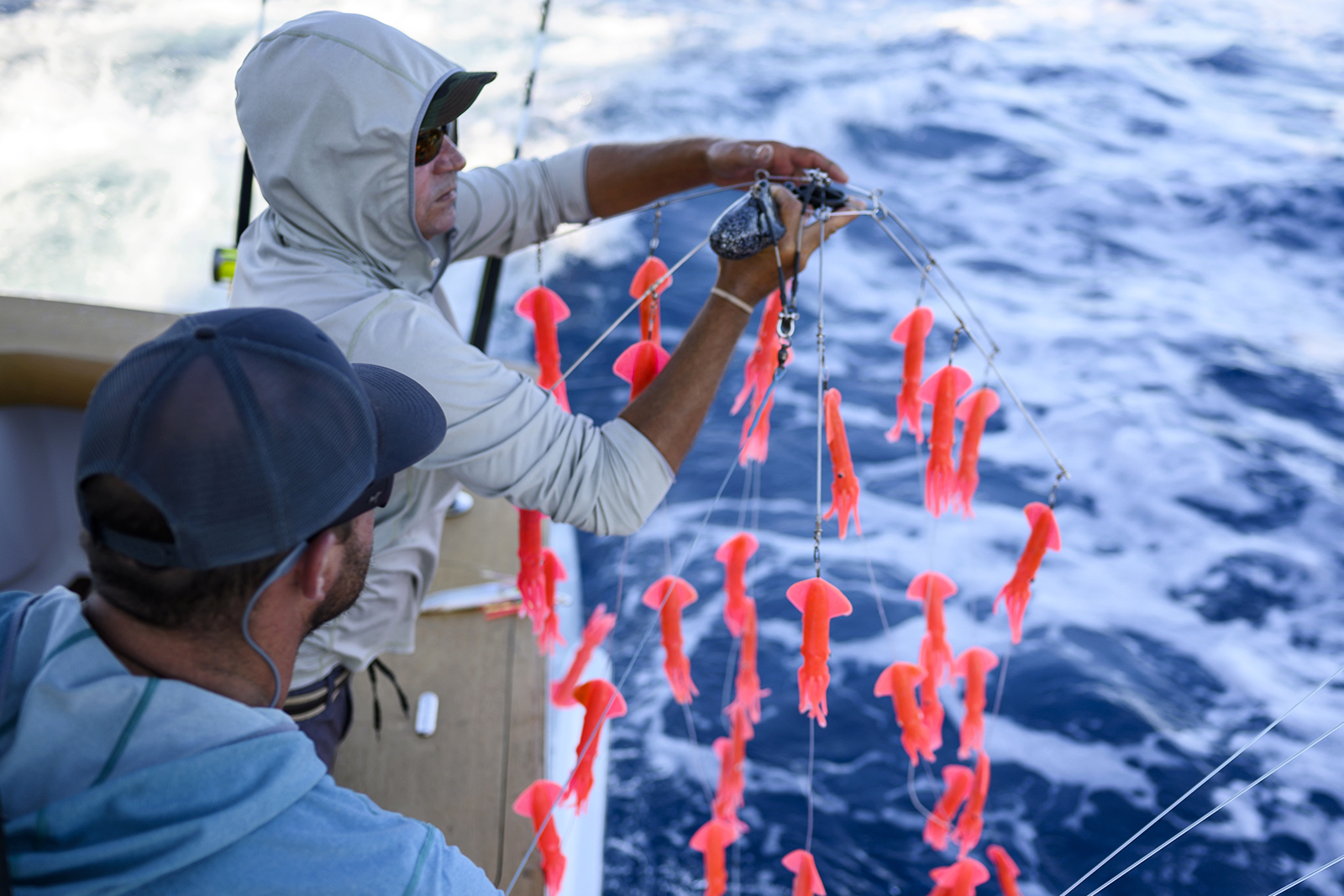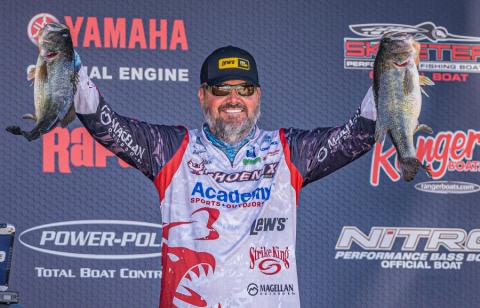Sam White
Trolling—that finely tuned art of deploying fishing lines from a slowly moving boat—can be a highly effective way to target a very wide variety of species. By definition you’re covering a significant amount of territory, much more than you ever could by casting from shore or a drifting boat. But how do you make the best of it? No matter if you’re fishing a spread of ballyhoo or artificial lures for king or Spanish mackerel, yellowfin, bluefin or blackfin tuna, mahi or wahoo, or specifically targeting sailfish or marlin, there are a few overarching considerations to keep in mind.

Trolling is a great way to cover a lot of water throughout the day, especially for pelagic species like this feisty Atlantic sailfish caught off Stuart, Florida, on a flat-calm winter day.
Offshore Trolling Rigs, Strategies, and Tips
Cover the Column
Perhaps the most important trolling strategy is to adequately cover all the bases. Regardless of the target species, some days they want the baits or lures in close to the boat, some days farther back, and some days wayyy back. Different species are also attracted to different positions in the spread as well. If you’ve got outriggers, it makes it easy to keep things spaced apart from side to side as well as front to back but if not, that’s fine. Just fish the transom rods in close and additional rods in the gunwale rod holders farther back. Be sure to put at least one back significantly farther than the rest, as this is often the one that gets nailed, especially by notoriously boat-shy tuna. Stagger the lines at varying distances too—this will allow you to maneuver the boat without everything becoming tangled in an unspeakable mess of monofilament and harsh language.
It's also best to send one of those transom lines down into the depths. There are several ways to accomplish this, whether by using a cigar-shaped trolling lead, downrigger or planer, or simply by pulling a lure which is designed to dive deep, such as a large, lipped trolling plug designed for that purpose. The deep rod is often a day-saver, especially for species such as wahoo that seem to enjoy a sub-surface snack from time to time (and if wahoo or king mackerel are in the neighborhood, a bit of wire leader can provide some added insurance against a bite-off).
So now we’ve designed a basic trolling spread with one or two baits or lures fairly close to the boat, two more fished a bit longer, one down deep and one way back. That leads us to the second consideration…
Don’t Fish Too Many Lines

It’s better to fish fewer lines with each one positioned correctly than to have too much gear in the spread, especially when short-handed on crewmembers.
It may seem counterintuitive: if five lines is good then trolling six is even better and seven or eight is great, right? Not so fast. It’s always better to fish a smaller number of rods and fish them as effectively as possible rather than just adding additional lines in the spread. Start with four, then add one rod deep—usually this one can be fished right off the transom and will, for the most part, stay out of the way and out of trouble. Same with one fished way back, you can usually work around it. But resist the urge to add much more until you’ve mastered the basics, and even then only if you have the crew to manage a larger spread. Keep in mind that once you hook up, all those remaining lines will have to be cleared. Even highly experienced professional crews in places like Hawaii and Central America keep their spreads generally limited to five lines, but each one is in exactly the right spot in the spread and is fished to perfection.
Turn and Keep Trolling
This is a hard one to master without some practice but when you get that first bite, don’t stop trolling. Instead of immediately throttling back (which is everyone’s first response,) keep the boat moving ahead and turn gently in the direction of the bite. In other words, if a fish is on the boat’s left side, turn to port gently and start clearing the lines on that side first, but leave everything else out. Unless that first bite is a giant marlin or tuna, you’re much more likely to get a second and possibly even third or fourth bite by keeping the spread out and fishing. And by turning in the direction of the first strike, you’re able to close the distance for your angler as well.
It's also important to keep the boat moving slightly ahead to help the angler avoid slack line, which is the No. 1 reason for lost gamefish. Even when it’s time to clear all the remaining lines, by keeping a little headway on, the angler has a much easier time staying tight and especially on a rampaging pelagic that’s running all over the ocean. By contrast, fighting that same fish from a dead boat offers a much greater chance of slack line and a pulled or tossed hook. Goodbye, fresh fish dinner. The exception is backing down, but this is limited to giant tuna or blue marlin when the angler needs help regaining line; in that case, you do what you have to do to help the angler during the fight.
Teasers Don’t Hook Fish

Teasers like this dredge only help attract gamefish to the spread, they don’t actually catch anything themselves.
If you’re heading for the Gulf Stream, you’ve probably seen and heard all about teasers—those hookless contraptions that you troll close to the boat in hopes of raising a fish that will switch over and eat something else in the spread. Just remember that whether they’re in the form of squid daisy chains fished on the surface or multi-armed dredges that swim down deep, teasers don’t have hooks in them—no one has actually ever caught anything on one. If you have the crew and the equipment (not to mention the budget) to utilize that kind of gear, that’s great but if not, don’t despair. It’s much better to fish a basic spread than to have seven lines, two dredges and two squid chains that get tangled every time you turn the boat, or when you’re fishing with just one or two buddies in the cockpit. Keep things manageable and you’ll be much more successful in the long run.
Trolling can be a highly effective and terrifically fun way to fish for just about anything that swims. You’re covering a lot of water and there’s always a nice breeze. Just remember the basics and enjoy the experience.






























